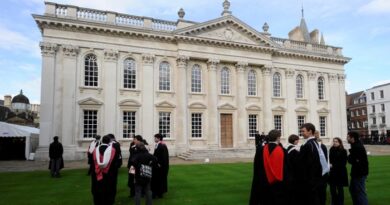Rio Tinto’s $215 Million Investment in Low-Carbon Steelmaking Research and Development Facility
The new facility in Western Australia is set to utilize raw biomass and microwave energy to convert iron ore into metallic iron during the steelmaking process.
Rio Tinto has announced a $215 million (US$143 million) investment to establish a research and development facility in Western Australia to evaluate a low-carbon steelmaking process that supports the decarbonization of the steel industry.
The new Biolman R&D facility is planned to be located in the Rockingham Strategic Area, south of Perth.
This facility is expected to use raw biomass and microwave energy for the conversion of iron ore into metallic iron during steel production.
It will also feature a pilot plant that will be ten times larger than its prototype in Germany, representing the first semi-industrial scale testing of the process.
Rio Tinto Iron Ore Chief Executive Simon Trott stated, “The world needs low-carbon steel to achieve net zero, and we are dedicated to making this a reality by exploring better ways to convert our Pilbara ores into steel.”
He also mentioned that the equipment fabrication will commence this year, with commissioning anticipated in 2026.
Rio Tinto claims that the BioIron R&D facility could potentially reduce carbon emissions by up to 95 percent compared to the current blast furnace method.
The proposed plant is a collaborative effort between Rio Tinto, University of Nottingham, Metso Corporation, and Western Australian (WA) engineering company Sedgman.
Upon completion, the facility is projected to generate 60 construction jobs for Western Australians.
WA Premier Roger Cook commented, “Being one of the largest iron ore producers globally, it is fitting for WA to lead the way in low-emission steelmaking, fostering significant economic prospects like producing low-emission steel locally.”
Becoming More Sustainable
Global Efficiency Intelligence previously reported that global steel production contributes to approximately 11 percent of all carbon dioxide emissions, with China leading in steel-induced CO2 emissions due to its extensive steel production.
The World Steel Organization ranks Australia 29th in terms of crude steel production.
Despite this ranking, Australia produces half of the world’s iron ore, which is the country’s major export.
A report from the Global Energy Monitor revealed that 43 percent of the planned steelmaking capacity globally is transitioning to electric arc furnace (EAF) technology, indicating a shift towards a more sustainable model in the steel industry.
Last April, the University of Wollongong received $4.2 million in funding from the Australian Renewable Energy Agency (ARENA) and industry partner BlueScope Steel to explore methods of utilizing low and medium grade iron ore in low-emission steelmaking to further decarbonize domestic steel production.
Project co-leader Xue Feng Dong stated, “Over the next five years, our team will collaborate with our industry partner to thoroughly investigate the long-term viability of utilizing Australia’s Pilbara ores in the emerging ESF (electric smelting furnace) process, including identifying and addressing future challenges and process constraints for low emission steel production.”



